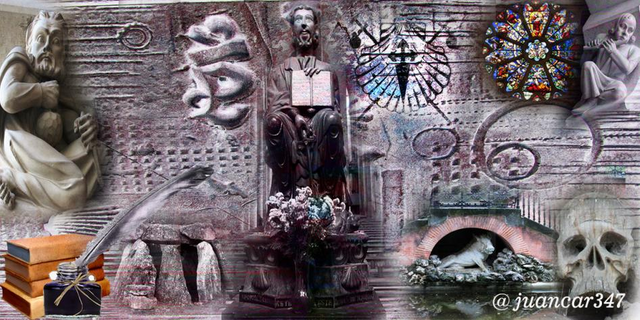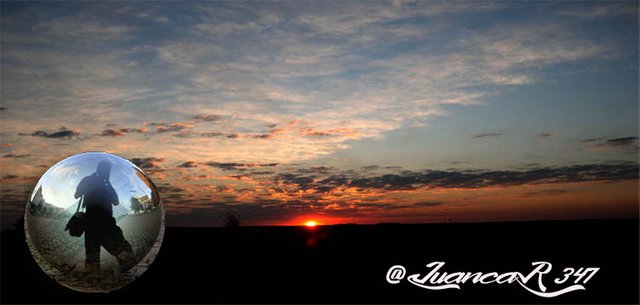Continuing with the details proposed in the route that we started in Araia (hermitage of San Juan de Amamio), leaving behind the ancestral Ocariz and continuing in the direction of the border with Navarra - let's imagine that we are pilgrims heading to Estella - the next town where It is worth stopping, once you leave behind the Port of Opakua, with its lush forests, it is Contrasta.
The Basque Kontrasta, in one of whose hillocks, dominating the population from a place that already very possibly knew ancestral cults to the figure of the Great Mother Goddess - the traditional Andra Mari, stands one of the most curious temples in the area: the hermitage of Nª Sª de Elizmendi. This hermitage is not, but, the only surviving hermitage of those seven - a significant number, like the stars that make up the Big Dipper, on which the pilgrims headed towards Compostela and Finis Terrae - that is known, had been in this old town founded, apparently, by King Alfonso X, in 1256.
The reason for this survival, as well as the fact that it is one of the most famous Marian shrines in the province of Álava, may lie in the very place where the hermitage rises. A place that, even today, and to say of the neighbors, radiates a powerful energy. This detail, which may seem vain and superstitious for many, perhaps, in the end, is nothing more than a clue to the possibility of an ancient megalithic center, chosen as a point of confluence of what the Celts called wouivres or snakes, and today we know as telluric currents that, it seems, act in a certain way on the environment and people and, in fact, Christianity took advantage on numerous occasions, to reactualizar in their favor, already established cults.
The one that is under a Marian invocation, should not surprise us too much if, following the pattern of the arguments so far, we direct the view a few kilometers ahead, towards the town of Ullibarri-Arana -which will be, the next point of destination- and we stop at his small hermitage, dedicated, precisely, to the ancestral figure of Andra Mari.
With a semicircular apse and an elongated nave, a look at the elements that make up its structure, including the excellent quality of its ashlars, can serve as a reminder to think about the strong Roman presence in times, whose nearby necropolis served as reusable material for temples and another type of later constructions. In such a way, that we should not be surprised to find the remains of numerous lpidas of such origin, especially in the southern area of the hermitage, distributed in the vicinity of the access portico.
Tombstones, on the other hand, in which remains of inscriptions can still be seen, as well as a variety of symbols, which have led some authors to think that they served as a model for the motifs carved in the great modillions of the apse. These motives consist, mainly, of solar disks, six-pointed stars -this kind of stars is very common, to the point that, called the flower of life or scarecrow, they fulfilled a protective function and they used to be placed in churches as well as in monasteries, as in private homes- and crosses immersed in circles.
One such cross immersed in a circle and with another circle or hole in the middle, offers an idea of rotation, of wheel, of life that does not stop and turn, like those ancient spirals that inspired numerous cults to practically all peoples and civilizations of Antiquity and that offer, following the reasoning patterns of the great Hermes Trismegistus, a vision of his Tabula Smeragdina, referring to that famous assertion that says: as it is above, so it is below.
Perhaps for this reason, must not be surprised if we stumble on our adventurous journey, casuistically, with ancestral symbols, although its true meaning has been lost and is now limited to the realm of speculation, still offer a worthy witness rooted certain symbols and myths in what we might well call, from a Jungian point of view, the collective unconscious. A good example of what I say, we could find them on the doorposts of some modern houses, close to the chapel, where it should not surprise us meet five-pointed stars, spirals and concentric circles, like a memory or inheritance, cults the ancestors.
But, possibly, of all the motives consigned in the modillions that like a half moon, it surrounds the apse, the one that more calls the attention or the one that stands out, is the one that shows a strange Christ. Carved in a rather rough way, the cross is hardly appreciated, offering, at least at a first glance, a sense of weightlessness, elevation and dominance of space, more typical of the Cathar representations, which hated the cross as an instrument of martyrdom. As I say, it's just an impression. But a detail is relevant, which should make us think that perhaps, the stonemason who worked it, left a signal on purpose.
When he made those oversized hands, in some way, he was also indicating a connection. A connection, whose meaning, in principle, I do not know, but of which I know there are numerous antecedents. And almost all of them, referred, precisely also, to the hands - or at least, one of them - disproportionate that can be contemplated in many virginal figures representative of Black Virgins. And even, in some figures of road saints, such as San Roque, which are usually found, too, in or near sanctuaries dedicated to them. It is not even strange to find that "defect" in angelic figures, being relevant, to cite an easily verifiable example, one of the angels that is located in the Romanesque cloister of the Cathedral of San Pedro, in Soria.
Given that Contrasta was a great communication hub, and that for its pilgrim ways also came to Spain part of that French marabunta, little or nothing illustrated, which swept the country like a plague of locusts, I wonder how many works, how many keys and how many wonders were not lost irremediably. Even so, this hermitage of Nª Sª de Elizmendi, still silent and sparse in details, reveals a mediatic attraction that, even without words, seems to imply that the most important thing, after all, is not the temple that is being seen , but the place over which it rises.
NOTICE: Originally published in my blog ROMÁNICA, ENIGMAS DEL ROMÁNICO ESPAÑOL. Both the text and the photographs that accompany it are my exclusive intellectual property. The original entry, where you can check the authorship of juancar347, can be found at the following address: https://juancar347-romanica.blogspot.com/2013/01/contrasta-ermita-de-n-s-de-elizmendi.html
[//]:# (!steemitworldmap 42.768456 lat -2.289979 long Contrast (Álava, Spain): hermitage of Nª Sª de Elizmendi d3scr)
Te invito a conocer el mundo del que estoy enamorado.
Image © juancar347. All Rights Reserved.
Original content by Original content by @juancar347
Discord
juancar347#4046
.png)

[Martial, latin poet]
.jpg)
/ᐠ._.ᐟ\
Downvoting a post can decrease pending rewards and make it less visible. Common reasons:
Submit
Hi
Downvoting a post can decrease pending rewards and make it less visible. Common reasons:
Submit
Hiya, just swinging by to let you know that this post made the Honorable Mentions list in our daily Travel Digest #378, curated by @itchyfeetdonica. Please drop by to check out all the rest of today's great posts and consider upvoting the Travel Digest if you like what we're doing.
Downvoting a post can decrease pending rewards and make it less visible. Common reasons:
Submit
Thank-you very much
Downvoting a post can decrease pending rewards and make it less visible. Common reasons:
Submit
Congratulations, Your Post Has Been Added To The Steemit Worldmap!
Author link: http://steemitworldmap.com?author=juancar347
Post link: http://steemitworldmap.com?post=contrast-alava-spain-hermitage-of-na-sa-de-elizmendi
Want to have your post on the map too?
Downvoting a post can decrease pending rewards and make it less visible. Common reasons:
Submit
Thanks
Downvoting a post can decrease pending rewards and make it less visible. Common reasons:
Submit